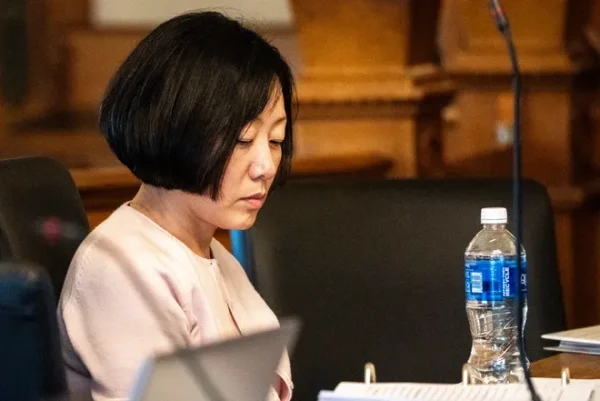One hundred percent of tuition goes toward education, Thorius says
February 11, 2009
In light of the recent economy, Simpson College has started to address the issue of students’ tuition dollars and where that money is spent each year.
Every year, Simpson releases an annual revenue assessment of where tuition is divided. For the 2007-2008 school year, the college put together a simple pie chart that shows exactly how the money is divided.
Jim Thorius, vice president for student development and dean of students, said that 100 percent of student’s tuition goes toward education, even though the money is placed in separate specialty categories.
“When you think about the separation of tuition, you can think of it as a household,” Thorius said. “In order to run the household, it takes x number of dollars. In our case, Simpson is our household and roughly 76 percent comes from tuition and fees, and the rest comes from room and board revenues, gifts and grants.”
Thorius also said that the college spends all of the income they receive from tuition and expenditures.
All of the money that students pay for tuition goes toward different divisions at the college.
The largest portion of expenditures consists of financial aid, which is around 33 percent. Twenty-six percent of funding goes towards the library and 10 percent is given to student services. The remaining percentages goes towards paying salaries of faculty, support staff at the library, those that run the food service, heat and electricity and general repairs for the college.
Even though the percentages remained steady this year, Simpson is preparing for the worst.
“We are all concerned about the economy and part of the challenge right now is maintaining the college,” Thorius said. “When you look at a normal year, you can see a historical pattern and guess what can happen. We’re not in a normal year, so it’s hard to predict what the impact will have at Simpson.”
In order to take on this problem, Simpson has designed a model for fall 2009.
Ken Birkenholtz, vice president for business and finance, said that this model was set up to provide a cushion for the college.
“We have a lot of challenges ahead of us,” Birkenholtz said. “This model will help provide the students and prospective students with the same quality that Simpson has to offer.”
With this model, Simpson may cut down on costs, such as simple maintenance, and may cut back on food service options.
Another factor of the model will be a slight increase in tuition. In the 2007-2008 school year, the comprehensive tuition fee was around $31,759. With this model, there would be a 3.9 percent increase in tuition in fall 2009 and then an intended 4.25 percent increase in 2010.
According to Birkenholtz, Simpson wants to keep tuition as low as possible, yet still be able to maintain the college.
“The goal of the college is to provide the best possible situation for students,” Birkenholtz said. “Most students receive financial aid, even those that are below the 90th percentile. Everyone that attends this college has received some sort of financial aid or scholarship.”
One student who has received aid from Simpson is freshman Emily Monaghan, who believes that Simpson’s tuition is a reasonable expense.
“Private colleges already have a reputation for being expensive,” Monaghan said. “A slight tuition increase shouldn’t deter people from getting an education.”
Thorius agreed with Monaghan and said that tuition hasn’t deterred prospective students from applying.
“So far, student enrollment is pretty high for next year,” Thorius said. “Though there’s still a high interest, we are making sure every student has a way of attending this college and that necessary funds are being distributed evenly.”
In order to keep current students, Monaghan said that she would rather the college cut back on other aspects, like student services, in order for the school to thrive during this economic crisis.
Birkenholtz said that this economic crisis will put a strain on the college.
“No one’s ever lived through a situation just like this one, so we’re trying to plan for the worst case scenario,” Birkenholtz said. “In this tough environment, we simply just don’t know.”












